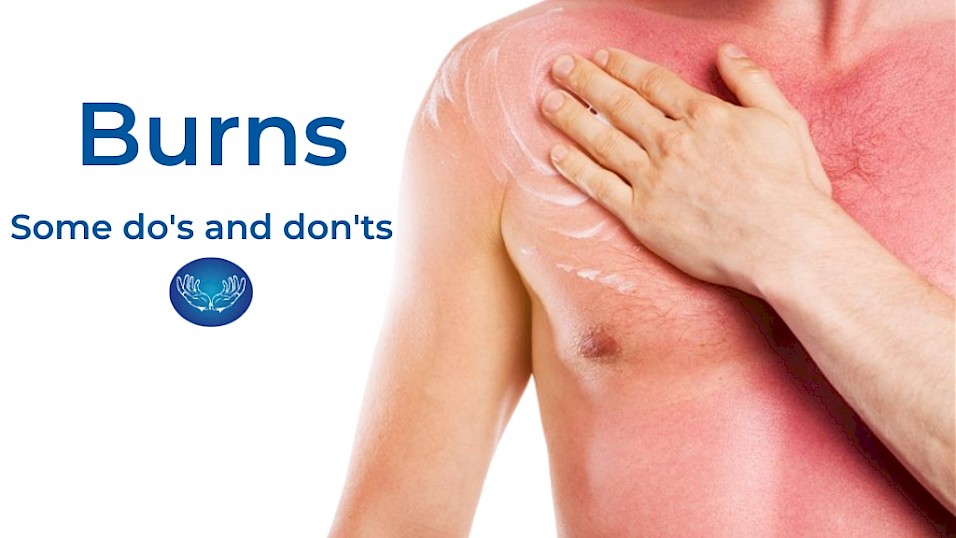Treatment Of A Burn
16 February 2020
With the weather hotting up and all the fires in Queensland and New South Wales we decided a refresher on Burns First Aid would be a 'cool' idea.
What is a burn?
Well this may seem self explanatory when we stick a hot pan on our skin however burns can occur in many different ways.
Scald burn – when something hot is poured on the skin. This is the most common cause of hospital admission for children.
Contact burn – when we touch something hot like the example above.
Flame burn – when our skin touches a fire. This is the most common cause of hospital admission in adults and obviously a concern with the recent bush fires.
Other types – radiant heat (sunburn), chemical, friction and electrical.
How to treat a burn?
Ok so you have gone and burnt yourself, probably screamed, panicked and now wondering how long to stick it under water?
Run the burn under cool tap water – This is a temperature of 2C- 15C. In Australia our tap water is clean enough to miss any nasty bacteria however in third world countries, bottled is better.
Keep it going for 20 minutes – Time it. Get your phone out and get comfy.
Use flowing water – flowing water is most likely to remain at a good cool temperature.
Some do’s and don’ts
Don’t put ice on the burn – this causes blood vessels to get smaller and less heat can be transferred out of the skin.
Don’t do it for a minute. In a pinch 5 minutes has been shown to be better than nothing however optimum time to reduce heat and improve healing time is 20minutes. This allows heat to be removed from all layers of the skin and has been shown to improve healing rate and reduce scarring.
If you cannot use flowing water. Use a cool wet cloth and change this every 2-3 minutes. Alternatively a cool bucket of water can be used with frequent changes to keep the temperature in range.
Putting creams and gels on too early can trap the heat. Avoid using these until after the area has cooled.
When to see a health professional?
Oooo tricky as burns are very deceptive and can worsen over time. Some things to consider.
Cause – don’t mess with chemical and electrical burns – get them checked out. If the cause included multiple injuries or a high level of contaminants – time to visit the hospital.
Size – A small deep burn in a child needs to be seen. However superficial burns can be more wide spread. Anything covering more than 1 area of the body must be seen by a specialist.
Location – burns to the face, neck, hands, feet, genitals, joints or airways must be seen immediately by a specialist.
Depth – If the burn is white or really blotchy red – this indicates a really nasty deep burn and must be seen by a specialist. If the area is not really painful but the burn is severe this could also indicate a deeper burn and must be looked at.
Hand Therapists
We treat burns everyday. Our patients range from contact burns to electrical burns. Our treatment involves
- assessing healing rates
- scar management
- wound care
- support and education
- exercises for larger joint burns
The quicker the burn heals the less scarring and pain long term for the patient. You can always call us and we can guide you through the best process.
Written by David Coles and Dee Coles

